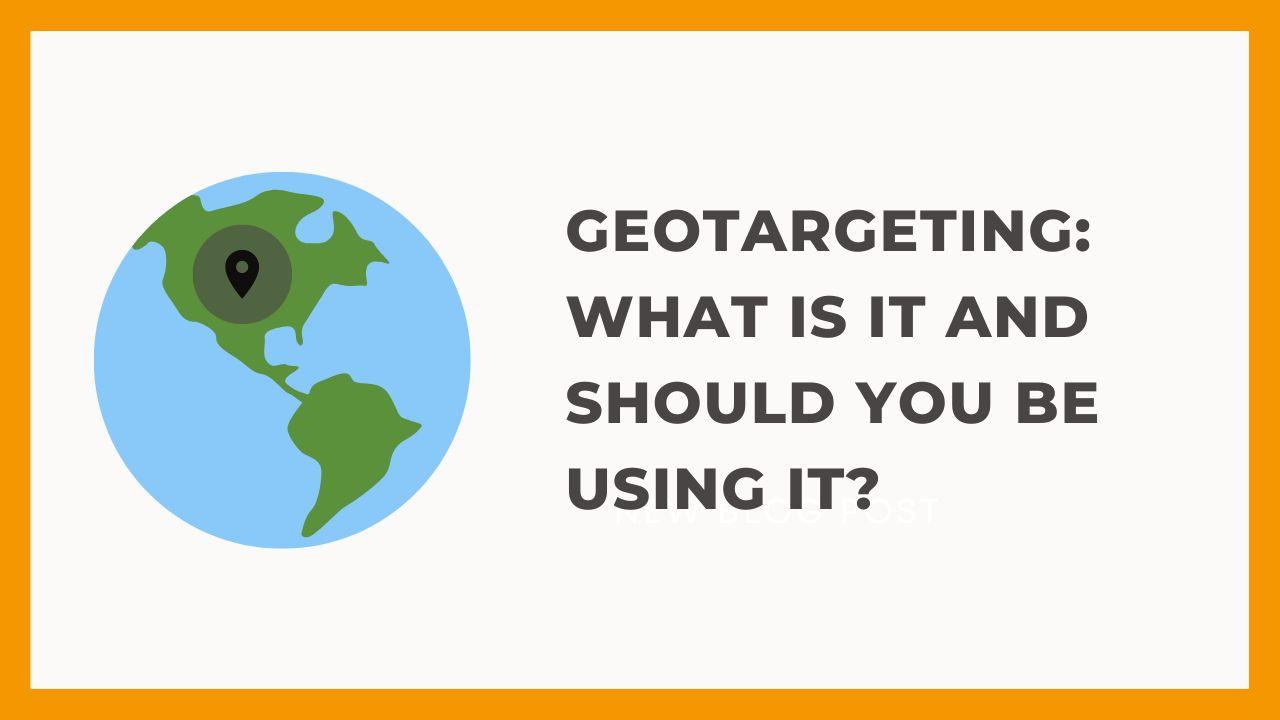Google Ads allow you to target your ads toward a certain location. This includes regional, country, and radius around a certain area.
What is Geotargeting?
Geotargeting allows businesses to select the specific locations that they want their ads to show to potential consumers. Geotargeting creates the ability to specialise ads for the location in which they are going to be displayed; for example, changing the messaging of an ad to appeal to people at different events depending on their location.
What is the benefit of targeting by location?
Geotargeting allows you to create ads that are relevant to the specific audience that is going to see them e.g. mentioning a nearby restaurant/service. This increases the chances of someone engaging with your ad because they know your business is nearby.
Targeting by location is a more effective use of your marketing budget – by using location targeting you can make sure that you are aiming your advertising to the right group. You wouldn’t want your ad popping up to someone in America if your company only ships to the UK. You can use more specific location targeting to test specific target audiences on a smaller scale before hosting a larger campaign. From the outset, you can get specific feedback from the group you are intending to target.
By targeting your local area you can become an established name in your targeted area. At the same time, you can exclude your advertisements from certain areas and IP addresses, thus meaning that you can hide your campaigns from your competitors – none of your unique ideas are at risk!
Is there anything that can go wrong when targeting by location?
There isn’t much that could go wrong with targeting by location, the only vital thing you should check is making sure that in the advanced location settings you don’t include people from outside of your catchment area.
Location targeting is based on a variety of signals, including users’ settings, devices and behaviour on certain platforms. However, these signals vary meaning that 100% accuracy is not guaranteed in every situation.
Why should you be using geotargeting?
If you are in an industry that has a broad range of client profiles based in multiple locations, then it is a good idea to create different ad campaigns for each profile or each area. This way you can have specially targeted ads for each of your different target groups, making your adverts come across as more personal and relatable to the customer. iMPACT conducted an A/B test on non-personalised vs. personalised CTA’s and they found that there was a 78.5% increase in conversions with personalised CTA’s.
You may also utilise geotargeting if you are running campaigns worldwide, you can target different ad campaigns with different languages to each necessary location.
What types of location settings are there?
‘Primary Location’ settings allow you to choose how you want to target your location by radius, location group or bulk location. ‘Advanced Location’ settings allow you to be even more specific as to where you want your ads to appear, you can completely exclude your ads from being shown in areas outside of your catchment zone. Let us look at these groups in more depth.
Radius Targeting:
Radius targeting allows you to set a catchment area around a certain location. For example, ‘5 miles around Paris’ would be a radius setting. This can be useful for anyone who provides a service in which they travel to customers. That way you can set your ads to only be promoted to people within your catchment area.
Location Groups:
Location groups are based around a specific place of interest for example a museum or a football ground and can also include specific demographic features.
Bulk Location:
Bulk Location settings allow you to (yep, you guessed it) bulk import multiple locations into one campaign so that if you are targeting more than one area all of your ad campaigns will be adjusted at the same time. This is usually used in larger businesses that have the capacity for nationwide or even worldwide campaigns.
How do you figure out which is the best option for you?
There are multiple things you need to consider before deciding which type of location targeting is going to work best for your business. You need to consider the size of your target audience, how many areas you want to target, the size of your target area/s and the demographics you want to reach. Once you have figured this out you can start to look at which type of geotargeting would best suit your needs. If your company is based in a specific area and requires consumers to physically visit that location, targeting by radius is a good idea.
You can adjust your spend on keywords to be higher when a person is in your catchment area this can be done repeatedly meaning the closer the customer gets to your store, the higher the spend on advertising. Consequently, the higher ad spend could increase the chance of sales/visits/sign-ups.
How could you use geotargeting to develop your next campaign?
Through the use of geotargeting you can experiment with different types of targeting in different areas. This allows you to determine where your target audience is predominantly located as well as figure out in what areas ads are more expensive or more lucrative. Then, depending on your target outcomes you can start to narrow down areas that will perform the best for your company whilst continuing to grow into new areas and make the best return for your budget.
To Summarise
Geotargeting or targeting by location is a great way to ensure that your advertising is reaching the right people, it is relatively straightforward to set up and it has basically no drawbacks. Giving your customers a more personalised experience is extremely important in order to stand out in any industry, why not start with this?




